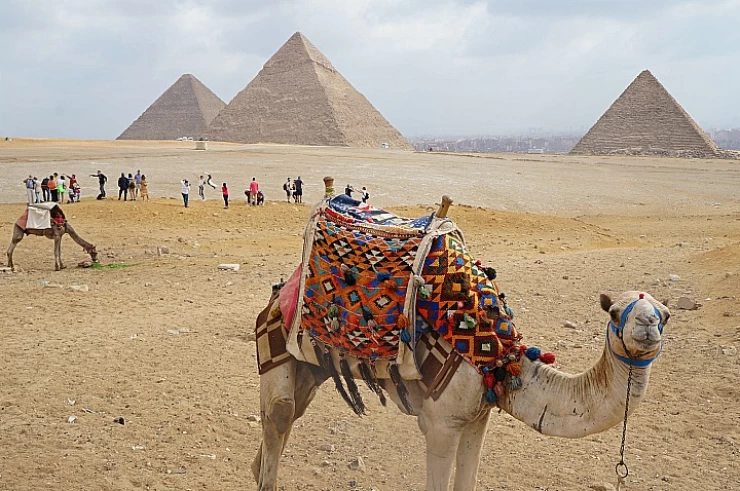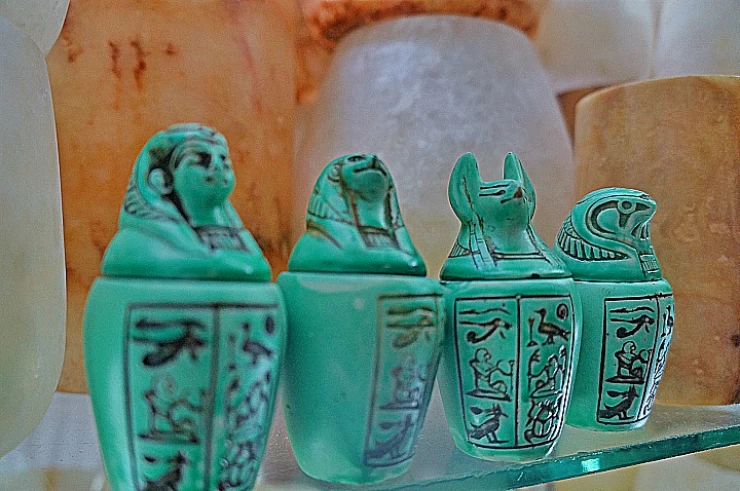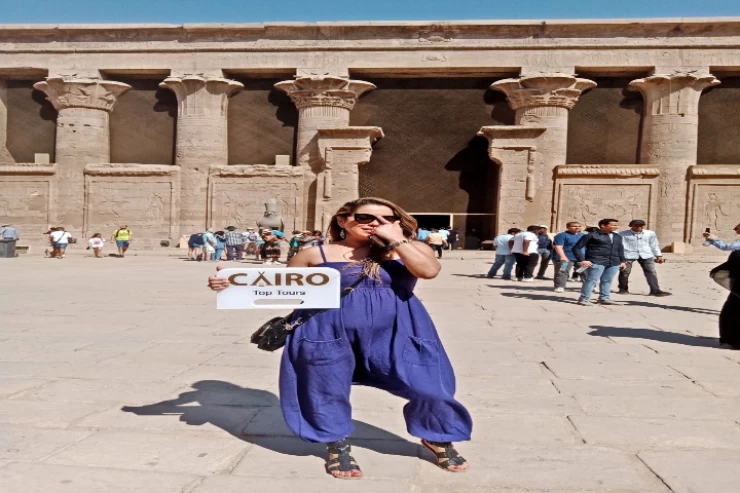
El Moez Street
Discover the historic charm of El Moez Street in Cairo.
Located deep in the city of Cairo, one can find El Moez Street, a gorgeous time capsule of Egyptian history. El Moez Street, known to many as Al-Muizz li-Din Allah Street, is a remarkable phrase that enables one to traverse the corridors of Islamic history enriched by some of the best examples of the medieval Islamic period, perhaps many mosques, dry and wet bazaars, and a variety of other experiences. In this place, there is a harmonious combination of the historical age and the contemporary, fast-paced city of Cairo, leaving one with the feeling of having traveled to a different era.
The Historical Significance of El Moez Street
Named after Al-Muizz li-Din Allah, the street is an ode to the fourth Fatimid Caliph, who conceived the city of Cairo in the 10th century. The street, originally intended to represent the fulcrum of the new city, later developed into one of the central streets of the medieval Croatian town, filled with houses, mosques, and market halls. El Moez Street retains traces of this history, having changed over centuries as Cairo became an administrative center and later, a commercial center.
Moreover, it is still among the oldest stretches of way in Cairo, which has some historic structures that have been very well preserved. Walking along El Moez Street feels as though one is traversing an open museum of art that tells the story of Egypt’s Islamic Art period, which lasted from the 10th century to the 17th century. The street can support attestation of Cairo’s illustrious past, where it served as a melting pot for different cultures and one of the many fascinating architectural attributes of the street, making it the world’s most beautiful intracity street.
Architectural Marvels Along El Moez Street
El Moez Street is characterized by a wide range of architectural works that include buildings from various Islamic Empires, such as the Fatimid, Mamluk, and Ottoman civilizations. Each structure is unique with detailed decoration and its cultural history. Here are some of the highlights that you should not miss while walking down the street:
Al-Azhar Mosque
Though slightly tucked away from the main street, Al-Azhar Mosque is just within walking distance, and it is one of the oldest and most revered centers of worship located in the Islamic World. Constructed in 970 A. Dominated by the center of Islamic culture, Al-Azhar, for quite a few ages, this mosque is remarkable for its incredible design. The minarets are elegant, and the mosque’s courtyard is vast.
Al-Hakim Mosque
Al-Hakim Mosque is dedicated to Al-Hakim bi-Amr Allah, who ruled in the East for some time. This edifice was built during the short period when the Fatimid Empire flourished and is an example of Fatimid architecture. It has giant minarets, a grand prayer place, and decorated vaults, landscapes, and corridors built in the 11th century. This mosque is still intact even after undergoing several restorations in the course of its history, which has managed to keep the historical part of Old Kam, so it is still preserved for the coming generations.
Sabil-Kuttab: an 18th-century structure within the Katkhuda complex
This remarkable building dates back to the 18th century and is a typical example of Ottoman-styled structures. A “sail” is a dome where people fetch drinking water free of charge, while a “kuttab” is a place for teaching the children the Quran. The elaborately decorated ceiling of the building, embellished in marble, tiles, and other materials, draws the attention of many people, making it a great site for taking photographs.
Qalawun Foundation
Among the most remarkable exercises of architecturally constructed space, which embraces a mosque, a madrasa, and an institution, is the Qalawun complex. The complex was built during the era of Sultan Qalawun in the 13th century. It is typical of Mamluk's architectural style. The artistic complexity of this institutional building is beyond comprehension, having stunning intricate woodwork, stone, and marble work, as well as beautiful domes.
Home of Al Suhaymi
The house has been fully restored to its glory during the Ottoman period, showcasing the life of a prosperous 17th-century merchant. The house to this – Bayt Al-Suhaymi – comes with wooden mesh windows, a beautiful inner garden, and skillfully decorated interior signs that carry the touch of the old Cairo charm.
Khan El-Khalili Market
Situated a few meters from El Moez Street is Khan El-Khalili, a marketplace that allows tourists to buy authentic Egyptian goods, such as jewelry, spice, cloth, antiques, and much more. Filled with colors, choking with scents, filled with shouting and noise—this is the market, where people come to buy and sell.
Experience the street's cultural atmosphere.
El Moez Street is not only a great number of historical edifices standing side by side, but also a lively place full of activity for the natives and visitors around the year. Throughout the year, this street experiences different cultures in the form of arts, theater, music, folklore, and other forms of entertainment.
As you stroll through the street, you’ll find musicians playing Egyptian traditional music, artists at work, and the aroma of street foods such as falafel, koshari, and desserts like basbousa and konafa fills the air. As night falls, lanterns and colored lights are turned on as they embellish the street, making it attractive turned beautiful.
The Tannoura Dance Show is among the most done activities along El Moez Street. This is a Sufi worship dance that is performed by trained dervishes in multicolor skirts to the traditional music. This is an enjoyable experience that one has to witness. This performance normally happens at Wekalet El Ghouri, which is an old caravanserai recently used as a cultural center.
Tips for Visiting El Moez Street
Best Time to Go: The best time to explore El Moez Street is in the early hours of the day or towards the evening when the weather is relatively cooler and great for photography. One can also appreciate the evening glory by visiting the street, which has a different enchanting aura with lights.
Guided Tours: In order to fully immerse oneself in the culture of the city building, you want to hire a local guide. Such professionals will explain the genius bits of each structure and all of its history.
Dress Conservatively: As you will be touring the numerous places of worship, you might want to dress conservatively. Therefore, women should carry a scarf or a shawl to cover their heads when entering a mosque.
Photography: Most places allow the taking of pictures, but it is always good to seek clearance first before clicking the camera, especially in places like churches.
Drink Water: The weather in Cairo can be hot at times; therefore, you are advised to have some water with you as you take a trip along the street.
El Moez Street: A Journey Through Time
Walking down El Moez Street is akin to flipping pages of a history book. This is a place where every brick or structure has a story to tell, making it a living history. Some may have an interest in history, others in architecture, and a few others may simply wish to enjoy the city of Cairo, but all will leave with unforgettable experiences when they visit El Moez Street.
El Moez Street is surely one of the best places to experience the true essence of Cairo, thanks to its architecture, culture, and history. So, put on your best walking shoes, carry your best camera, and prepare yourself to walk on one of the most ancient and beautiful streets in the universe.
A Deeper Dive into El Moez Street's History
The majority of visitors to the Egyptian capital have a notion that one of the oldest streets in the region, El Moez St., is a timeless work of art. El Moez St. was laid out as part of Cairo’s foundation by the al-Fatimiyun in the X a.d. century. It was first conceived as the primary radial of the radial city from the southern gates of Bab Zuwila to the northern gates of Bab al-Futuh and Bab al-Nasr. It adapted over many centuries to the rule of many Islamic sultanates, such as the Ayyubids, the Mamluks, and the Ottomans, each of whom left behind different buildings and traditions.
When it comes to its social and economic context, El-Moez Street is one of those streets that have undergone more than enough development. Due to its geographical placement, it is considered to be a cultural crossroad and a busy center for commerce. People who were traveling from every corner of the Middle East, Africa, and even Europe would come to the residents of those streets to sell their goods—spices, fabrics, and various commodities. The design of the street and most of its buildings echo tales of the splendor that was Islamic Cairo, telling tales of magnificence and allowing peeks into the opulent history of the place.
Planning Your Visit: Practical Tips
Getting There
It is easy to reach El Moez Street from various directions in Cairo. Take the metro to Bab El Shaaria or Ataba stations if using public transport, and then walk to the entrance of the street. Otherwise, a taxi or a private car is a better option.
Exploring nearby attractions
In case you get some free time, the exploration of areas nearby is an option you can consider. Al Azhar Park, a well-maintained green park with stunning views of Cairo, has its history within reach, or you can visit another district, Islamic Cairo, which is known for the other prominent sites like the Sultan Hassan Mosque and Al-Rifa’i Mosque.
Food and Refreshments
Many street food vendors can also be found on El Moez Street, as this allows one to sample some quite local Egyptian snacks. If you prefer a leisurely meal, traditional cafes and restaurants are available that serve things like ful medames, ta’ameya, or stuffed food that consists of pigeons. One of the many Egyptian dishes that can be served as desserts includes atayef and muhallabia.
Shopping Tips
It is usual to bargain while going around in Cairo’s markets. Hence, do not shy away from bargaining. There are numerous shops along El Moez Street that have lots of handmade crafts, jewelry, and textiles that can be bought as souvenirs. Buying local crafts from the vendors is very important, as it helps to promote and protect these crafts from vanishing.
A Walk Through Egypt’s Golden Era
There is more to El Moez Street than sightseeing. One takes a trip, immersing in the history that Egypt boasts of. It is full of history, art, and culture for its people. There is an understanding of the historic city, how it is filled with ancient passageways, high-rising minarets, the sound of the adhan bellowing out in the streets, and so on. One cannot help but admire the richness of the city’s past and the spirit that continues to live on. Whether a traveler is a history lover, a culture seeker, or just a person who wants a good trip, there is always something in El Moez Street for everyone.
Discover the historic charm of El Moez Street in Cairo.
Located deep in the city of Cairo, one can find El Moez Street, a gorgeous time capsule of Egyptian history. El Moez Street, known to many as Al-Muizz li-Din Allah Street, is a remarkable phrase that enables one to traverse the corridors of Islamic history enriched by some of the best examples of the medieval Islamic period, perhaps many mosques, dry and wet bazaars, and a variety of other experiences. In this place, there is a harmonious combination of the historical age and the contemporary, fast-paced city of Cairo, leaving one with the feeling of having traveled to a different era.
The Historical Significance of El Moez Street
Named after Al-Muizz li-Din Allah, the street is an ode to the fourth Fatimid Caliph, who conceived the city of Cairo in the 10th century. The street, originally intended to represent the fulcrum of the new city, later developed into one of the central streets of the medieval Croatian town, filled with houses, mosques, and market halls. El Moez Street retains traces of this history, having changed over centuries as Cairo became an administrative center and later, a commercial center.
Moreover, it is still among the oldest stretches of way in Cairo, which has some historic structures that have been very well preserved. Walking along El Moez Street feels as though one is traversing an open museum of art that tells the story of Egypt’s Islamic Art period, which lasted from the 10th century to the 17th century. The street can support attestation of Cairo’s illustrious past, where it served as a melting pot for different cultures and one of the many fascinating architectural attributes of the street, making it the world’s most beautiful intracity street.
Architectural Marvels Along El Moez Street
El Moez Street is characterized by a wide range of architectural works that include buildings from various Islamic Empires, such as the Fatimid, Mamluk, and Ottoman civilizations. Each structure is unique with detailed decoration and its cultural history. Here are some of the highlights that you should not miss while walking down the street:
Al Azahar
Though slightly tucked away from the main street, Al-Azhar Mosque is just within walking distance, and it is one of the oldest and most revered centers of worship located in the Islamic World. Constructed in 970 A. Dominated by the center of Islamic culture, Al-Azhar, for quite a few ages, this mosque is remarkable for its incredible design. The minarets are elegant, and the mosque’s courtyard is vast.
Al-Hakim Mosque
Al-Hakim Mosque is dedicated to Al-Hakim bi-Amr Allah, who ruled in the East for some time. This edifice was built during the short period when the Fatimid Empire flourished and is an example of Fatimid architecture. It has giant minarets, a grand prayer place, and decorated vaults, landscapes, and corridors built in the 11th century. This mosque is still intact even after undergoing several restorations in the course of its history, which has managed to keep the historical part of Old Kam, so it is still preserved for the coming generations.
Sabil-Kuttab: an 18th-century structure within the Katkhuda complex
This remarkable building dates back to the 18th century and is a typical example of Ottoman-styled structures. A “sail” is a dome where people fetch drinking water free of charge, while a “kuttab” is a place for teaching the children the Quran. The elaborately decorated ceiling of the building, embellished in marble, tiles, and other materials, draws the attention of many people, making it a great site for taking photographs.
Qalawun Foundation
Among the most remarkable exercises of architecturally constructed space, which embraces a mosque, a madrasa, and an institution, is the Qalawun complex. The complex was built during the era of Sultan Qalawun in the 13th century. It is typical of Mamluk's architectural style. The artistic complexity of this institutional building is beyond comprehension, having stunning intricate woodwork, stone, and marble work, as well as beautiful domes.
Home of Al Suhaymi
The house has been fully restored to its glory during the Ottoman period, showcasing the life of a prosperous 17th-century merchant. The house to this – Bayt Al-Suhaymi – comes with wooden mesh windows, a beautiful inner garden, and skillfully decorated interior signs that carry the touch of the old Cairo charm.
Situated a few meters from El Moez Street is Khan El-Khalili, a marketplace that allows tourists to buy authentic Egyptian goods, such as jewelry, spice, cloth, antiques, and much more. Filled with colors, choking with scents, filled with shouting and noise—this is the market, where people come to buy and sell.
El Moez Street is not only a great number of historical edifices standing side by side, but also a lively place full of activity for the natives and visitors around the year. Throughout the year, this street experiences different cultures in the form of arts, theater, music, folklore, and other forms of entertainment.
As you stroll through the street, you’ll find musicians playing Egyptian traditional music, artists at work, and the aroma of street foods such as falafel, koshari, and desserts like basbousa and konafa fills the air. As night falls, lanterns and colored lights are turned on as they embellish the street, making it attractive turned beautiful.
The Tannoura Dance Show is among the most done activities along El Moez Street. This is a Sufi worship dance that is performed by trained dervishes in multicolor skirts to the traditional music. This is an enjoyable experience that one has to witness. This performance normally happens at Wekalet El Ghouri, which is an old caravanserai recently used as a cultural center.


















